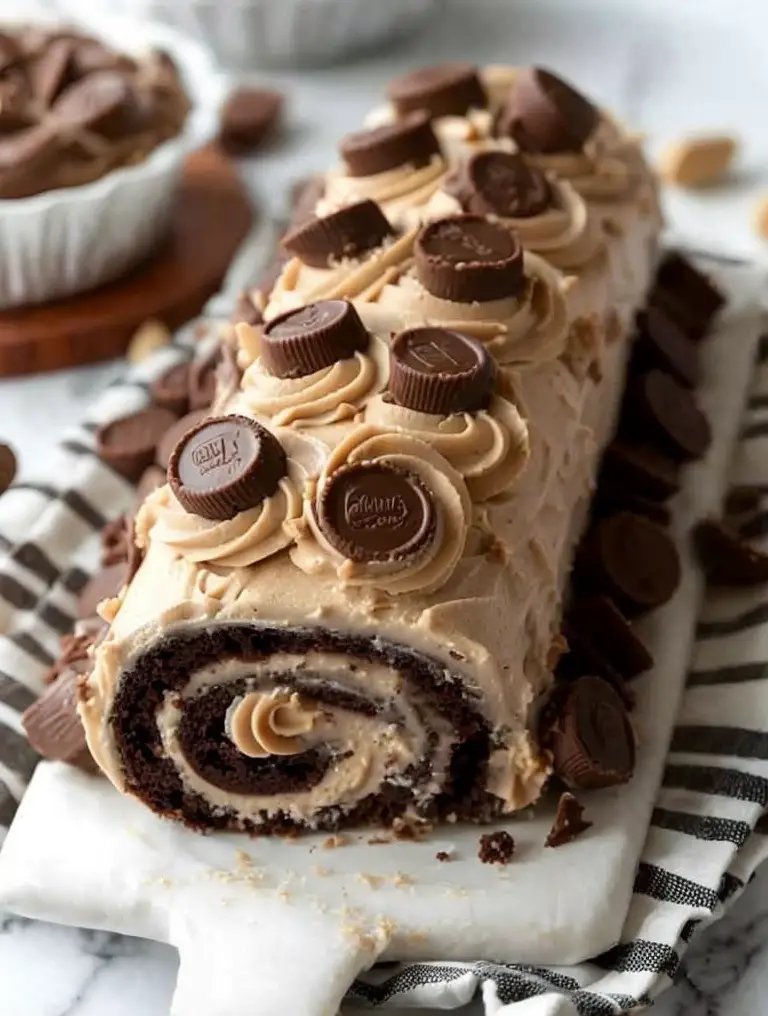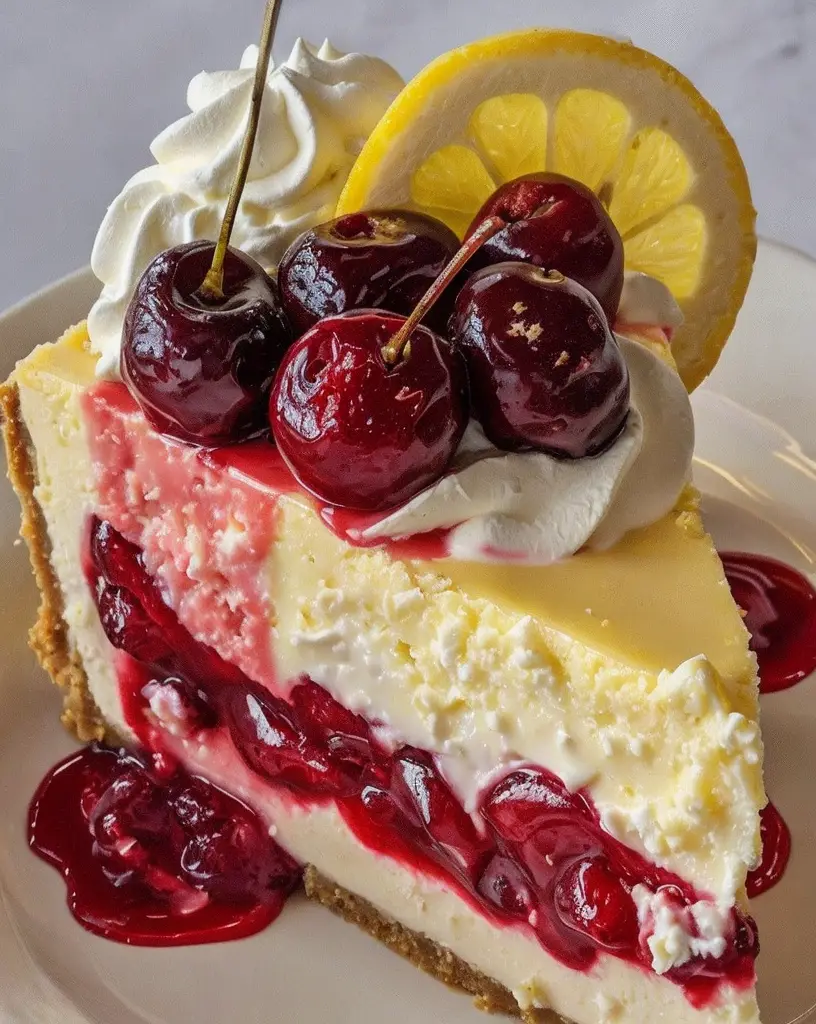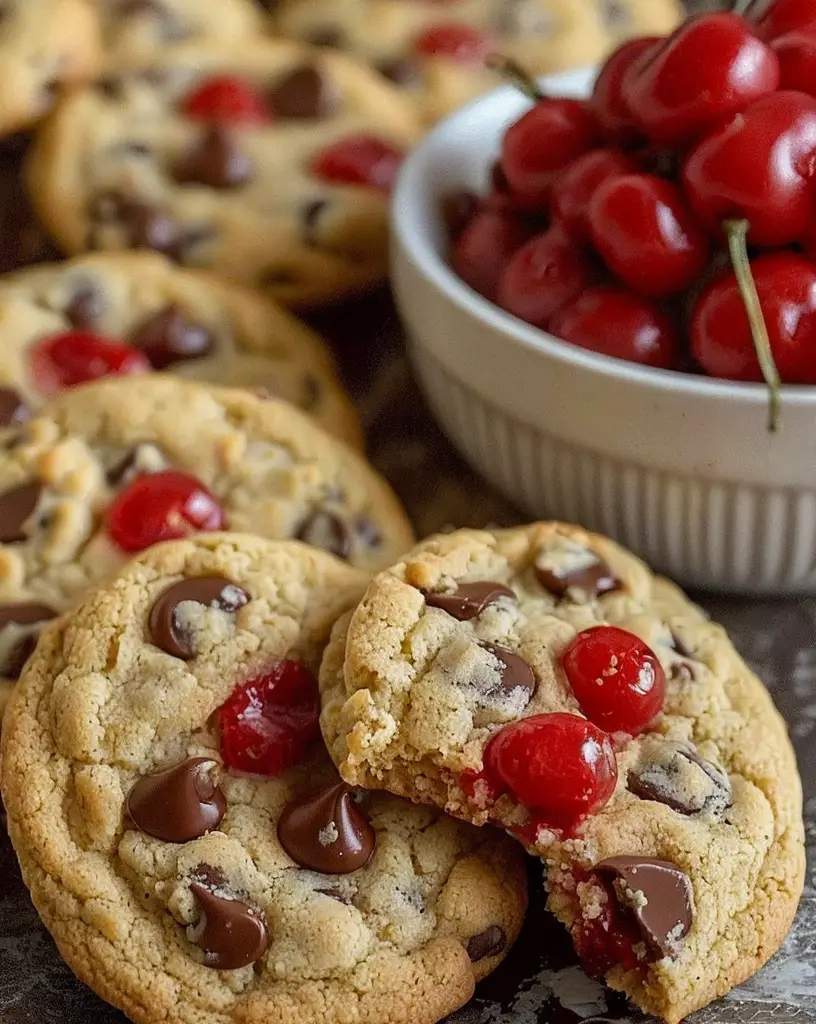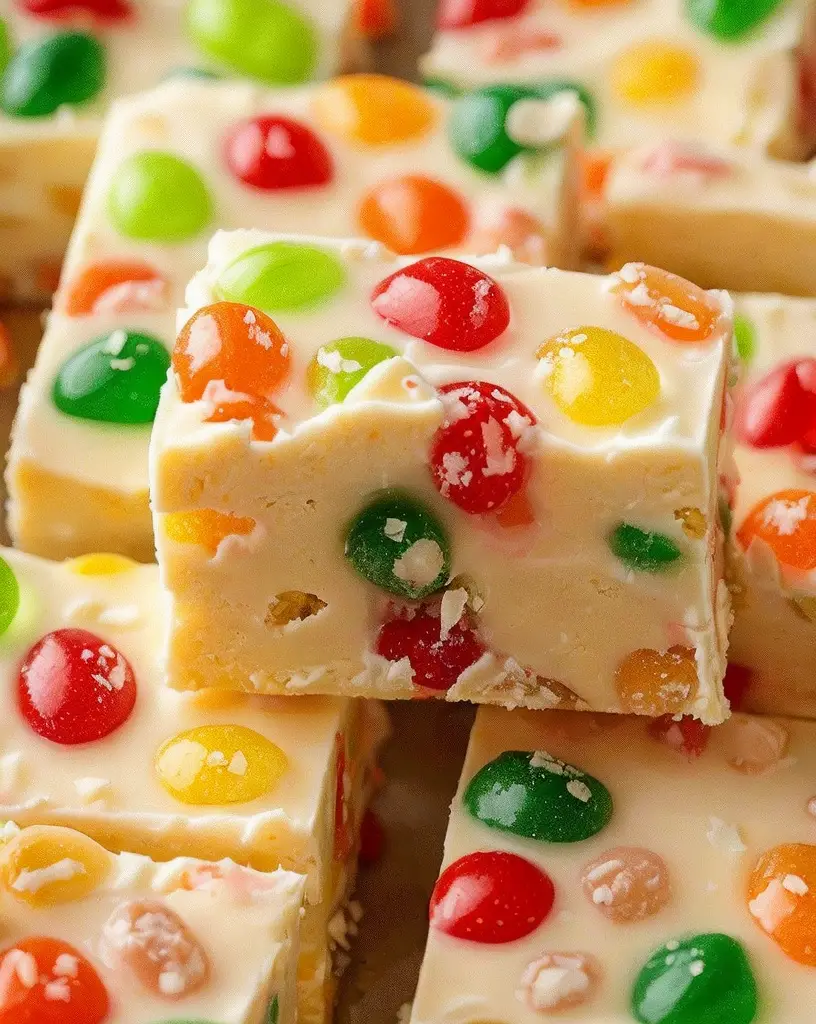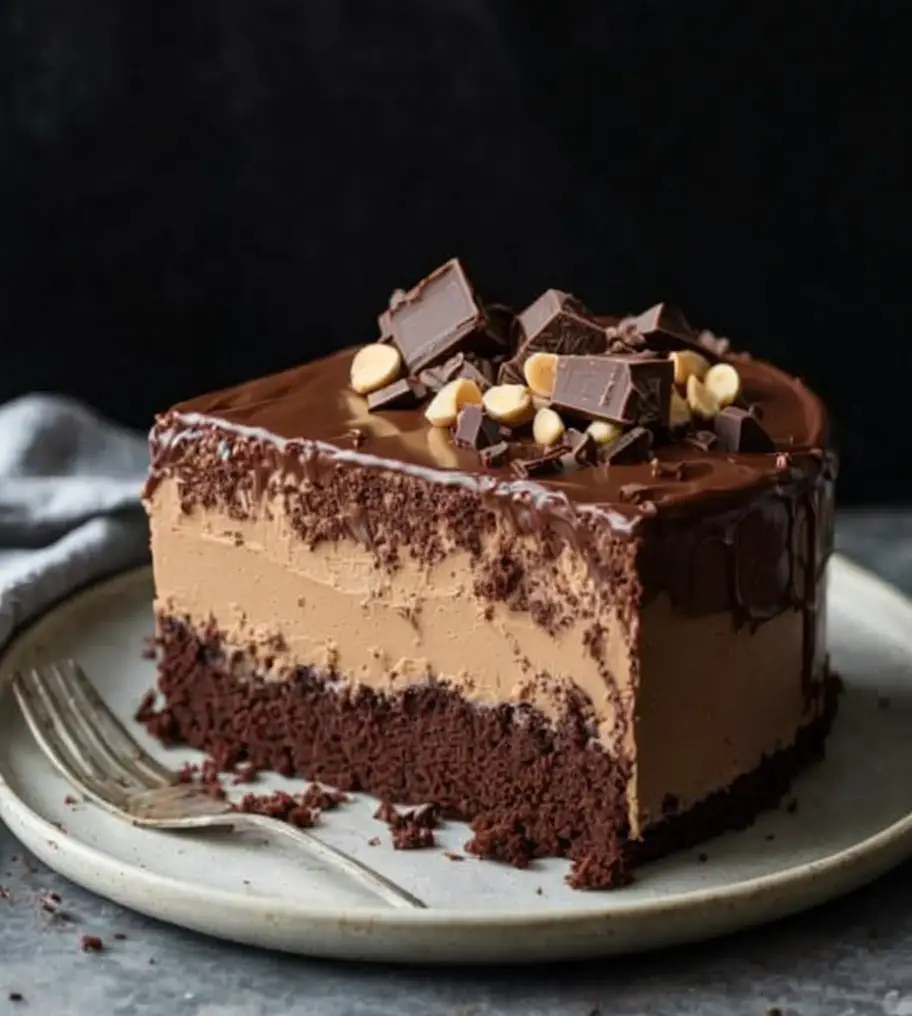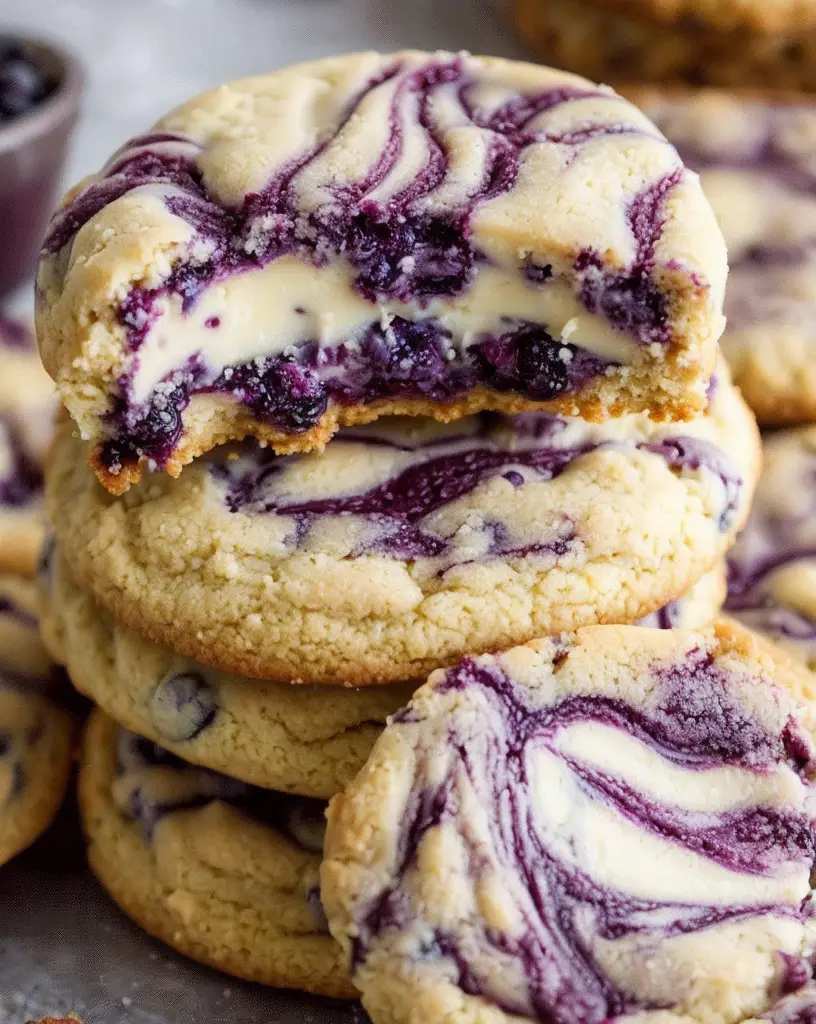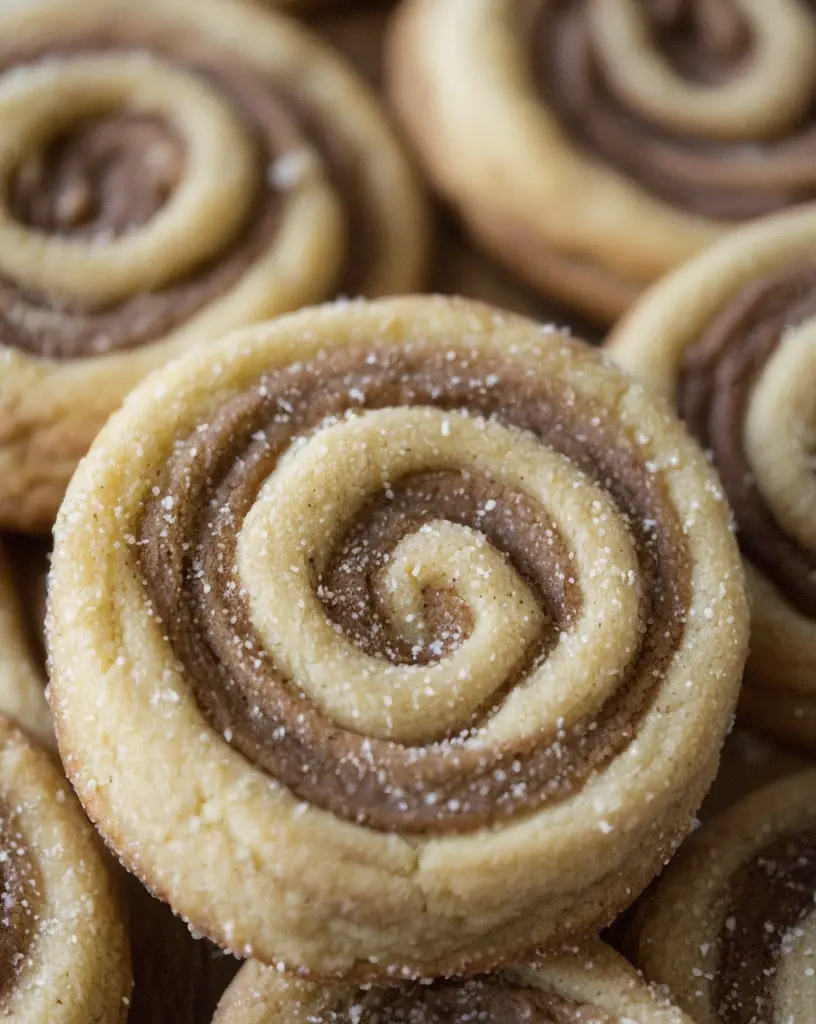Peanut Butter Cup Cake Roll: A Delectable Delight
If you’re a fan of peanut butter and chocolate, then this Peanut Butter Cup Cake Roll is destined to become your new favorite dessert. This cake roll combines the rich, velvety texture of a chocolate sponge cake with a creamy peanut butter filling. Each slice is a symphony of flavors and textures, delivering a perfect balance of sweet and savory. Whether you’re preparing it for a birthday celebration or a casual get-together, this cake is as easy to make as it is delicious.
The art of the cake roll may seem daunting, but with our detailed instructions, you’ll be a pro in no time. Imagine cutting through a spiraled slice, unveiling the luscious layers of peanut butter cream enveloped by a moist and airy cake. Not only is this Peanut Butter Cup Cake Roll a feast for the palate, but it also pleases the eyes with its elegant presentation, making it an ideal choice for impressing your guests.
Quick Recipe Highlights
- Flavor Profile: The combination of bold chocolate and creamy peanut butter provides a delightful and comforting taste experience.
- Texture: Each bite is marked by the fluffiness of the sponge cake contrasted with the smoothness of the peanut butter filling.
- Aroma: The cake exudes a warming scent of cocoa mixed with the nutty fragrance of peanut butter, irresistible to anyone nearby.
- Visual Appeal: A beautiful spiral of golden brown and chocolate hues, perfect for an Instagram-worthy dessert table.
- Skill Level Needed: Suitable for bakers with intermediate skills but accessible for ambitious beginners following step-by-step guidance.
- Special Equipment: A jelly roll pan and parchment paper are essential for achieving the perfect roll without cracks.
Recipe Overview
- Difficulty Level: Mastering the art of rolling the cake does take a bit of practice, but patience and care will yield fantastic results.
- Category: Fits perfectly within the realm of celebratory desserts and casual indulgence.
- Cuisine: This recipe pulls from classic American dessert traditions, known for its love of rich, comforting flavors.
- Cost: A moderate cost recipe as it utilizes pantry staples with the main splurge being peanut butter cups.
- Season: Best enjoyed year-round, this cake roll shines as a comforting winter dessert or a summer barbecue finale.
- Occasion: Whether it’s a birthday party, holiday gathering, or simply a weekend treat, this recipe adds joy to any occasion.
Why You’ll Love This Recipe
The exquisite taste of this Peanut Butter Cup Cake Roll is sure to capture your heart. The contrast between decadent chocolate and savory peanut butter is a flavor combination celebrated for its timeless allure. Every mouthful delivers a rich and creamy experience that creates an unforgettable taste sensation—it’s everything a peanut butter lover dreams of.
Convenience is a hallmark of this recipe. Despite its elegant presentation, the preparation is surprisingly straightforward. With our easy-to-follow steps, you can create a professional-looking dessert in the comfort of your own kitchen. Plus, the ingredients are simple and readily available at any local grocery store.
This delightful dessert is not only indulgent but also offers comforting satisfaction. The nutritional benefits of peanuts include a good source of protein and healthy fats, making this dessert a more fulfilling choice. Of course, moderation is key, but enjoying a slice of this cake can be part of a balanced lifestyle.
Sharing the Peanut Butter Cup Cake Roll at gatherings can bring a smile to the faces of family and friends. Its stunning presentation makes it a table centerpiece, and it’s an ideal conversation starter. This cake is bound to be the highlight of any party, winning over both chocolate aficionados and casual sweet-tooths alike.
Cost-effectiveness and accessibility make this recipe a must-try for any dessert enthusiast. While the flavors are complex, the method and ingredients aren’t burdensome on your wallet. Even with a modest budget, you can create a dessert that tastes and looks like it came from a high-end bakery.
Historical Background and Cultural Significance
The concept of the cake roll, or Swiss roll, originated in Central Europe, making its way to America in the 19th century. The fusion of this technique with classic American flavors like peanut butter and chocolate is a testament to culinary innovation and cultural blending.
Peanut butter has been a staple in American kitchens since the early 20th century, symbolizing comfort and simplicity. Its integration into desserts like this cake roll highlights its versatility and enduring appeal in America’s culinary landscape.
Over the decades, the peanut butter cup cake roll has evolved to include various riffs and adjustments, yet it never strays far from its roots. However, regional twists and personal touches continue to keep this classic exciting and relevant to modern palates.
In different parts of the United States, this recipe has seen unique adaptations, often based on locally-sourced ingredients and personal preferences. Each variation adds an exciting spin to the original, making every cake roll a personal and satisfying creation.
Ingredient Deep Dive
Peanut butter, the star ingredient, is not just a taste sensation but a nutritional powerhouse. Its rich history dates back to ancient civilizations where peanuts were cultivated for their nutrient-rich seeds. Today, it’s a beloved staple in American households, prized for its energy-boosting properties.
Nutritionally, peanut butter is a source of protein and healthy fats, making it a satisfying addition to any dessert. Selecting a smooth, natural peanut butter provides the best consistency for the cake roll’s filling, as it offers creaminess without added sugar or preservatives.
Storage is key to maintaining the freshness and quality of peanut butter. It should be kept in a cool, dry place and always sealed tightly. If separation occurs, simply stirring will restore its creamy texture. If substituting, almond or cashew butter can provide a different but equally delicious flavor profile.
Chocolate, the other protagonist of this recipe, has been cherished since ancient Mesoamerican cultures, celebrated for its luxurious taste and mood-lifting properties. It’s no wonder this ingredient is a universal symbol of indulgence and comfort.
When choosing chocolate for the cake roll, opt for high-quality cocoa powder and semi-sweet chocolate to balance the sweetness of the peanut butter. Both should be stored in a cool, dry place, away from direct sunlight. If needed, you can swap semi-sweet for dark chocolate to enhance the cake’s depth of flavor.
Common Mistakes to Avoid
- Overbaking the cake can lead to cracks when rolling. Ensure to check for doneness with a toothpick while still keeping it slightly moist.
- Rolling the cake while too hot or too cold can break it. Wait until it is warm to the touch before carefully rolling with parchment paper.
- Skipping the parchment paper can result in a cake that sticks and breaks. Always line your pan for easy removal and rolling.
- Using crunchy peanut butter can disrupt the creamy texure. Stick to smooth peanut butter for a consistent, velvety filling.
- Filling the roll too late may result in a dry texture. Spread the filling when the cake is at optimal temperature for perfect moisture absorption.
- Inaccurately measuring flour leads to a dense cake. Fluff up flour before scooping to ensure accurate measurements.
- Substituting ingredients without knowledge may global balance. If alternatives are necessary, evaluate their impact on both texture and flavor.
- Ignoring cooling before serving can ruin presentation. Let your cake roll chill thoroughly for clean and neat slicing.
Essential Techniques
Mastering the roll is crucial for success. This technique allows you to create that signature spiral, a hallmark of cake rolls. Be prepared to practice with patience to get it just right. Roll the warm cake gently with parchment paper; this initial roll prevents cracking and builds muscle memory for the final presentation.
Proper spreading technique ensures even distribution of the peanut butter filling. This is important to achieve uniform texture and balanced flavor density throughout the cake. Use an offset spatula for a smooth, seamless layer that won’t mound or break.
When baking the sponge cake, timing and temperature are key. Avoid overbaking by monitoring closely. The cake should spring back when lightly touched and not pull from the sides of the pan excessively. These visual cues guide you to the perfect bake.
Ensuring even cooling before spreading the filling prevents unwanted melting and clumping. The right temperature provides a supportive base for the filling, maintaining its structure. Skipping this step can result in a runny or inconsistent texture.
Pro Tips for Perfect Peanut Butter Cup Cake Roll
For a non-stick baking process, line your jelly roll pan with parchment paper, ensuring overhangs for easier removal. This can prevent frustration with sticking and ripping.
Experiment with chocolate types for variation. Try a richer dark chocolate for a bolder flavor that stands out against the creamy peanut butter.
Avoid refrigerating too long before serving to maintain moistness. A quick refrigeration should suffice to set the filling without drying the sponge.
For an elegant touch, sift a light dusting of cocoa powder over the finished roll before presentation. This adds a touch of sophistication and aroma.
Allow the cake roll to rest before slicing, as this helps the flavors meld and the texture settle, minimizing messiness and ensuring clean, tight rolls.
Firmly wrap leftovers in plastic wrap to preserve moistness. This is important for retaining freshness over a couple of days without losing texture integrity.
Variations and Adaptations
Regional variations include adding a jam-inspired layer for a delightful twist on the classic flavor. Raspberry or strawberry blends well with the peanut butter for a unique taste experience.
To adapt for different seasons, incorporate ingredients that reflect the time of year. In winter, a dash of cinnamon adds warmth, while a hint of citrus zest brightens summer presentations.
Dietary modifications are accessible with various nut butters, gluten-free flour blends, and dairy-free creams, tailoring the dessert to various preferences and dietary needs.
Flavor variations can be achieved through adding a touch of vanilla extract or a splash of espresso powder to enhance chocolate depth without clashing with dominant flavors.
To alter texture, include crushed peanuts within the filling for a bit of crunch. This not only adds contrast but also complements the smoothness of the rest.
For a unique presentation, consider slicing the prepared roll into smaller rounds and arranging them in a layered pattern to emphasize the spiral effect, serving as perfect individual treats.
Serving and Presentation Guide
To perfect your plating, aim for slices that are clean and uniform. Utilize a warm serrated knife to cut slices without dragging, maintaining a pristine appearance.
Garnish ideas include sprinkling chopped peanut butter cups or drizzling a glossy chocolate sauce across the top, which both enhances flavor and visual intrigue.
Traditional accompaniments such as a cup of strong coffee or a scoop of vanilla bean ice cream can enhance the richness and provide a wonderful balance to the dish.
Modern serving suggestions might involve using individualized plated desserts, perfect for a formal dinner setting, where presentation takes center stage.
Consider the cake’s temperature for optimal enjoyment. Allowing it to reach room temperature before serving maximizes moisture and flavor release.
Portion control is important to fully appreciate the dessert’s richness without overwhelming the palate. Aim for modest slices to let each bite shine.
Wine and Beverage Pairing
A rich Port wine complements the chocolate and peanut butter, offering a luxurious mouthfeel that deepens the dessert experience with each sip.
For non-alcoholic choices, a spiced chai tea can augment the flavors, infusing an undertone of aromatic spices that parallels the complexity of the cake roll.
Coffee, with its naturally robust flavor, pairs seamlessly with this dessert—just be sure to choose a blend with nutty, chocolatey notes to match the cake’s profiles.
Consider serving your wine or beverage slightly chilled to contrast with the dessert’s richness, enhancing the full flavor spectrum during the tasting experience.
Presentation can be elevated by using crystal stemware for wine or sophisticated mugs for coffee, adding an element of class to the dessert course.
Storage and Shelf Life
Secure your cake roll by wrapping it in plastic wrap or placing it in an airtight container to keep it fresh for up to three days at a cool room temperature.
Avoid exposing the cake to temperature fluctuations as this could affect both texture and taste. A constant, cool environment is ideal for storage.
Choose containers that don’t compress the cake, preserving its shape and integrity. Specialty cake storage containers or flat-bottomed ones are recommended.
Watch for signs of spoilage, such as changes in texture, unusual moisture, or off-putting smells. These indicate that the cake is past its prime for consumption.
Reheating should be gentle, if needed. Only a slight warming, avoiding drastic temperature changes, maintains its freshness and structural composition.
For longer storage, consider slicing and individually wrapping pieces for freezing. This method promotes easier thawing for future individual servings.
Make Ahead Strategies
Start with preparing the sponge batter in advance, storing it covered in the refrigerator for a day to streamline final assembly.
To maintain freshness between steps, store rolled sponge in parchment within the fridge, preventing unnecessary drying before the final roll with filling.
Assess the impact of storage on quality by opting for fresh ingredients in each separate element, assembling when all components are ready to guarantee fullness in flavor.
Master proper filling assembly by spreading evenly yet quickly to avoid hardening or thickening of the filling as it sits.
Reheat based on need by gently warming in a low-temperature oven rather than a microwave, which may cause uneven heating and texture degradation.
Integrate fresh garnishes or dusting of confectioner’s sugar just before serving to reignite visual appeal without impacting flavor or texture negatively.
Scaling Instructions
To halve the recipe, adjust ingredient measurements accordingly and use a smaller baking pan to maintain the sponge’s thickness proportional with adjusted quantities.
Doubling or tripling involves careful scaling of all components, especially the filling, to ensure maintained flavor throughout the increased amount of sponge.
Equipment like larger baking pans may be required to accommodate more batter, along with expanded workspace for rolling and assembly without crowding efforts.
Timing modifications should include prolonged baking or cooling times proportionate to the increased ingredient volumes to ensure each component is cooked optimally.
Consider larger or additional storage solutions if creating more for future consumption, maintaining freshness if not served immediately.
Nutritional Deep Dive
Macro breakdown reveals balanced levels of carbohydrates and proteins with moderate fat content, offering a rewarding treat within mindful consumption.
Micronutrients included are particularly noted in the filling’s peanut butter, providing vitamin E and magnesium, thereby contributing to its nutritional appeal.
Health benefits may be observed in the satiating qualities derived from the protein and fiber content, encouraging reduced follow-up snacking.
For those observing dietary guidelines, portion sizes and ingredient sources are noted, such as opting postively where possible for organic or low-sugar variations.
Understanding the recipe’s structure assists in making calculated choices regarding indulgence versus nutritional impact, empowering more educated dessert decisions.
Maintain weight management through enjoying this dessert within a balanced meal plan, acknowledging the potential richness of ingredients and conscious serving size.
Dietary Adaptations
For a gluten-free transformation, use gluten-free baking flour blends that offer similar texture without sacrificing cake structure or mouthfeel.
Switch a dairy-free component such as coconut cream in the filling for instances where lactose poses dietary concerns, retaining similar consistency and richness.
Explore vegan alternatives through egg replacements and non-dairy spreads, adjusting processes slightly to assure consistency without animal products.
Adapt low-carb goals by minimizing sugar content and opting for natural sweeteners along with almond flour substitution for lower glycemic impact.
Keto adjustments can follow similar practices to low-carb, choosing quality fats and minimizing carbohydrate-rich elements where possible.
Paleo-inspired variants may utilize almond flour bases, natural sweeteners, and premium nut spreads, ensuring respect for the dietary framework priorities.
Strong focus on low-FODMAP versions encourages cautious ingredient scrutiny while still permitting pleasurable dessert experiences through strategic alterations.
For other specific dietary concerns, consider less common ingredient inclusions or omissions with a mindful approach to maintain enjoyment without limiting core appeal.
Troubleshooting Guide
Understand texture issues by evaluating baking time and moisture levels; a balance ensures the cake either stays moist or dries out inadvertently.
Flavor balance can be fine-tuned by adjusting filling ingredients, leaning on personal sweetness or richness preferences within the familiar recipe framework.
Temperature problems addressed prompt timely assembly and correct baking location considerations to avoid cooking inconsistencies.
Overcome equipment challenges by fortifying the importance of non-stick supplies and properly-sized pans, offering equal distribution and fewer baking mishaps.
Ingredient substitutions recognized remove complexity, ensuring alternatives focus on maintaining the original flavor, texture, or compound effect without altering intention.
Timing concerns highlight the role of proper cooling intervals, underscoring their impact on the final roll success in both structural and filling applications.
Recipe Success Stories
Community feedback frequently applauds the winning combination of flavors, crediting easy adaptability for regional taste twists established within personal kitchens.
Variation successes stem from shared reader evaluations, showcasing unique uses like incorporating seasonal fruit syrups or personalized pastry cream tweaks influenced by cultural instincts.
Adaptation stories thrive as more inventive substitutions appear, encouraging others to explore boundaries with filling alterations or crust developments tailored to favored palates.
Reader suggestions frequently lead to enhancement opportunities and improvisation within the recipe itself, elevating universal recognition for flexibility accommodating diverse groups.
Photographic tips situate naturally amongst success stories, presenting insight into capturing each detail that rolls beautifully and deliciously in visual keepsakes shared widely online.
Frequently Asked Questions
Yes, substitute the all-purpose flour with a gluten-free blend to maintain the same texture while keeping it gluten-free.
2. What’s the best way to prevent the cake from cracking when I roll it?
Rolling the cake in parchment paper while warm ensures flexibility and aids in maintaining a smooth roll without cracking.
3. How early can I prepare this cake before an event?
The cake can be made up to three days in advance when wrapped properly, preserving freshness for the occasion.
4. Can I use crunchy peanut butter instead of smooth?
While possible, smooth peanut butter is recommended to keep the filling texture creamy for best results.
5. How should leftover cake be stored?
Wrap it tightly in plastic wrap or store in an airtight container to retain moisture and texture at room temperature or refrigerated.
6. Is it possible to use white chocolate instead?
Yes, white chocolate offers a sweeter, vanilla-forward variant that shifts the flavor profile while retaining pairing compatibility with peanut butter.
7. How thick should I roll the cake?
Aim for thin width, rolling tightly to ensure multiple thickness spirals capture evenly distributed fillings within each cross-sectional slice.
8. What other filling can I use besides peanut butter?
Cream cheese frosting or fruit spreads offer creative alternatives adequately pairing with the original chocolate sponge concept.
9. Should I use salted or unsalted butter?
Unsalted butter is ideal for those controlling salt levels, with optional salt additions considered to taste within recipe components.
10. Can I freeze slices for later use?
Absolutely! Freeze individual slices with parchment separators for easy, single-serve thawing while maintaining quality control over time.
Additional Resources
Examine related recipes such as chocolate logs or roulades, gaining insight into mastering rolling techniques for dessert versatility.
Access technique guides focusing on mastering essential tasks like cake rolling and chocolate ganache for professional-grade finishes.
Explore ingredient information sessions for core recipe components like premium cocoa or alternative nut megabutter innovation, connecting culinary theory with practice.
Discover equipment recommendations simplifying kitchen experiences via small investments that garner significant outcome improvement.
Uncover seasonal variations or adaptations within the larger dessert spectrum, illustrating fusion inspirations drawn from globally diverse traditions.
Join the Conversation
Share your creations on social media using hashtags or tagging pages for collective appreciation and peer interaction, sparking fresh idea exchanges.
Gain valuable photography tips to highlight the dessert’s visual allure and engage viewers with techniques designed to capture and draw culinary admirers.
Engage in recipe reviews to add depth and insight, offering practical considerations or confirming excellence in the recipe’s execution.
Delve into community engagement, seeking exchanges that complement your cake project’s enhancements or share pleasure within kitchen creativity portfolios.
Experience recipe variations highlighted by exploring uncovered dialogues around budding trends or long-standing acclaim, bridging culinary community connections in delightful support.
The Recipe
Peanut Butter Cup Cake Roll
Serves: 8
Prep Time: 30 mins
Cook Time: 15 mins
Total Time: 45 mins
Kitchen Equipment Needed
- Jelly roll pan
- Parchment paper
- Offset spatula
- Mixing bowls
- Electric mixer
- Serrated knife
Ingredients
- 3/4 cup all-purpose flour
- 1/4 cup cocoa powder
- 1 tsp baking soda
- 1/4 tsp salt
- 4 large eggs
- 1 cup granulated sugar
- 1/2 cup smooth peanut butter
- 1/2 cup whipping cream
- 1 cup chopped mini peanut butter cups
Directions
- Preheat the oven to 350°F (175°C). Line a jelly roll pan with parchment paper.
- In a bowl, sift together flour, cocoa powder, baking soda, and salt. Set aside.
- In another bowl, beat eggs and sugar together with an electric mixer until thick and pale.
- Gradually fold in dry ingredients until just combined.
- Spread the batter evenly into the prepared pan and bake for 12-15 minutes.
- Upon immediate removal, transfer onto a clean, lightly sugared cloth and gently roll the cake. Allow cooling.
- To make the filling, whip peanut butter and cream until fluffy. Incorporate chopped peanut butter cups.
- Unroll the cooled cake, spread with filling, and reroll. Wrap in parchment and refrigerate for at least an hour.
Recipe Notes
- Ensure even cooling before spreading the filling to avoid runniness.
- Maintain tight rolling for defined, visually distinct spiral effects.
- For a more intense flavor, incorporate a dash of espresso powder into the cake batter.
